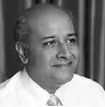The Madras High Court in the case of K. Manivannan v. The Chairman, IPAB & Ors. dismissed a writ petition filed by the petitioner against the order of the IPAB, dismissing the revocation application filed by the petitioner against the third respondent, Mr. M Mani (hereinafter referred to as the 'Respondent').
In response to a patent infringement suit filed by the Respondent against the petitioner, the petitioner had filed an application before the IPAB for revocation of the Respondent's patent. The petitioner claimed that the threshing machine patented by the Respondent was identical or similar to the invention claimed by the petitioner in his prior filed application and that the petitioner had manufactured and advertised the claimed invention prior to the filing of the Respondent's patent application, rendering the patented subject matter anticipated due to prior publication, prior public knowledge and prior use.
The Madras High Court, while affirming the IPAB's order of dismissal of the revocation application based on the differences in the constructional factors and distinct claims of the Respondent's patent as compared to those of the petitioner's claimed invention, also clarified the scope of prior publication as well as prior public use. The Hon'ble High Court, observed that since the petitioner had abandoned its application as per section 21(1) of the Patent Act, 1970 and the same was not published, the said application would not constitute prior publication. The Court further noted that since the petitioner's advertisements in newspapers, including photographs of the petitioner's claimed invention did not show any constructional aspect or important features (as claimed by the Respondent), the said advertisements also could not anticipate the Respondent's patented claims.
This update is authored by Clasis Law, Clyde & Co's associated firm in India
The content of this article is intended to provide a general guide to the subject matter. Specialist advice should be sought about your specific circumstances.


